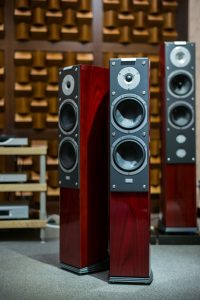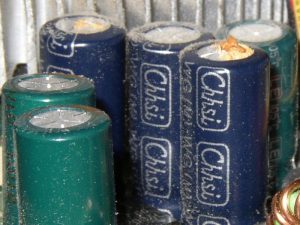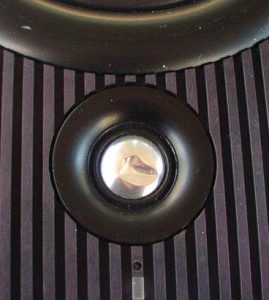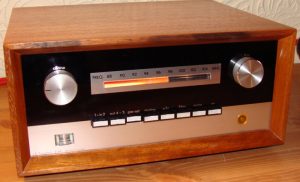For those starting out, buying second hand Hi Fi or home cinema gear can be very tempting, especially if budgets are tight. For the uninitiated, however, it can also be very daunting, the last thing you want is to lose hard-earned cash on dud kit that doesn’t work or worse, get yourself scammed. On this page, you’ll find numerous tips on how to buy second hand and vintage hi-fi speakers, amplifiers and other components. All you need to help you get started and hopefully lead you away from some expensive mistakes.
- Step 1: Know What You’re Buying
- Step 2: Know What It’s Worth
- Step 3: Making an Offer or Bid
- Step 4: Paying and Receiving Goods
- Step 5: Don’t Get Scammed!
- Advice for all Components
- Amplifiers
- CD Players
- Loudspeakers
- Radios / Tuners
Tips on Buying Second Hand Hi Fi Gear

Step 1: Know What You’re Buying
So you’ve seen an item which has taken your fancy. The first thing you should do before you start buying second-hand hi-fi, is research it and find out all you can about the item. Make sure it’s exactly what you expect, does what you want and has the necessary connections you need.
- See if full specifications are available on the manufacturers’ website. Some manufacturers are better than others in this respect, some only have info on items currently for sale.
- Try checking out the manufacturers’ website from a years ago, using the Wayback Machine at the Internet Archive. An old version of their site may have the information you need.
- Search for other fansites or forum threads with information. Google Groups search can be handy here.
- Search for reviews from old magazines or by users (e.g. Audioreview. The latter may be biased, but can still contain useful information
- Whilst searching, keep an eye out for mention of common problems or fault the item suffers from. They may have been unlucky, but its stuff to check.
Now you’re clued up on the item, check that the seller’s item matches. Look out for model/specification discrepancies.
Step 2: Know What It’s Worth
 Now you have a good idea of what the item is and what it can do, you need to gauge what it’s really worth. Some sellers are naively optimistic with pricing, some don’t have clue and will seriously underprice.
Now you have a good idea of what the item is and what it can do, you need to gauge what it’s really worth. Some sellers are naively optimistic with pricing, some don’t have clue and will seriously underprice.
- Your previous searching may have thrown up the new price of the item. Although interesting, once an item is a few years old, this price is pretty irrelevant. Good kit will hold value well, crap, mediocre or simply unfashionable kit will drop in value a lot.
- Search for the item on eBay
 within completed auctions, to see what prices the item has sold for previously. Ignore unsold prices, the seller quite likely priced too optimistically. Check the auctions for the higher and lower prices, they may be explained by condition (brand new/spare & repair) and postage options (collection only from the Isle of Sky).
within completed auctions, to see what prices the item has sold for previously. Ignore unsold prices, the seller quite likely priced too optimistically. Check the auctions for the higher and lower prices, they may be explained by condition (brand new/spare & repair) and postage options (collection only from the Isle of Sky). - Search on this site, to see what prices other private sellers are charging for the same or similar items.
Whilst searching, you may notice the item you’re interested in, has been listed on many sites over a long period of time. Or has been listed on eBay several times and gone unsold. In these situations, you may have a good chance to barter the asking price down.
several times and gone unsold. In these situations, you may have a good chance to barter the asking price down.
Step 3: Making an Offer or Bid
Now you’re armed with lots of knowledge of the item, and roughly what it’s worth, you can make an offer or place a bid. Each forum has its own rules and etiquette on how to proceed with an offer. Some insist on all communication on the thread (e.g. AVforums), others prefer it via Private Message (PM) (e.g. HiFi Wigwam), whereas many classified sites give you an email address or phone number. eBay items will either be an auction or Buy-It-Now.
items will either be an auction or Buy-It-Now.
To Barter Or Not?
When buying second hand hi fi, offering a lower price than asked is a perfectly reasonable thing to do on forums and classifieds (and eBay listing with Buy-It-Now or Best Offer), the seller may merely refuse or counter offer. Rare, sought after items gaining lots of attention may garner numerous offers from many people, leaving the seller to choose the highest.
listing with Buy-It-Now or Best Offer), the seller may merely refuse or counter offer. Rare, sought after items gaining lots of attention may garner numerous offers from many people, leaving the seller to choose the highest.
- Importantly, if you do make a lower offer and it is accepted by the seller, it’s bad etiquette to then pull out and not complete the sale.
- If you barter and agree a lower price, it’s bad etiquette to then try and barter further when collecting and paying. You agreed on a price – stick to it! The exception to this is if you later discover an issue or damage to the item, that you weren’t away of when making your first offer.
Step 4: Paying and Receiving Goods
As a buyer, an element of trust is expected. It is good form for the buyer to pay for goods upfront, then let the seller post them once your funds are confirmed and cleared. The exception to this rule is when you collect an item, whereupon cash payment is the default choice.
For distance buying, PayPal is the default choice, particularly for eBay auctions. This service lets you pay by debit/credit card, instantly transfers funds and offer protection for the buyer and seller alike. All fees are passed on to the seller. Some sellers may ask for a ‘PayPal gift’ payment, to avoid paying these fees, however, this will negate any protection otherwise afforded. Some forums rule against this too.
auctions. This service lets you pay by debit/credit card, instantly transfers funds and offer protection for the buyer and seller alike. All fees are passed on to the seller. Some sellers may ask for a ‘PayPal gift’ payment, to avoid paying these fees, however, this will negate any protection otherwise afforded. Some forums rule against this too.
After payment has been sent, patience is required whilst the goods are posted. Many buyers get anxious at this point and hound the seller when they haven’t received anything the next day. Post can get delayed, calling cards can get missed and sellers are real people, sometimes things don’t happen as quickly as planned. Contact the seller, but civility is the key. Check any tracking info you’ve been given.
On receipt of goods, check it thoroughly as soon as you can. Remember, if the box is visibly damaged on delivery, mark it such to the courier. Any damage done in transit needs to be reported quickly, to ensure no hiccups when claiming against insurance. Double-check everything is as described in the original advert/auction, confirm all accessories are included.
If all is well and good, do let the seller know.
Step 5: Don’t Get Scammed!

As with all private transactions, there is an element of trust, which is unfortunately abused sometimes. On this page, I am going to raise your attention to a few common scams that have been doing the rounds and catching some buyers out. Do read over these and familiarise yourself with the warning signs. Ultimately, if something looks ‘too good, to be true’, it probably is.
- Has the buyer brought any Hi-Fi lately? Run a search on their forum username, check their postings, or check their previous eBay auctions and feedback. If they’ve only brought two staplers lately and are now selling £6000 speakers, be wary.
- Cash mugging; you are requested to pay for a very high-value item by cash and meet up to exchange cash/goods. However, the location is secluded and a bit dodgy. They may claim the item isn’t with them, and ask you to follow them down the street to where it is. Either way, this scam ends with a brutal mugging. Be wary of exchanges not at permanent (residential) addresses. Avoid carrying large amounts of cash upon your person. However, for small value items, meeting at very public places (e.g. busy train station) is usually fine.
- Be wary of adverts/auctions that list a high valued item box. e.g. “Sony STR5400ES Receiver, new box”. There have been instances of people literally selling an empty box only, fooling buyers into thinking they are paying for a product in the box.
Check the seller’s feedback or forum reputation. Someone who has a large amount of positive feedback on eBay or has been a long-standing member and regular poster on forums is likely to be trustworthy. Conversely, if the seller has zero eBay feedback or has only just joined a forum, proceed with caution. We all have to start somewhere, but do be wary before buying second hand hi fi from them.
General Advice before you Buy Second Hand HiFi Equipment
To gauge how well used (or abused) a piece of audio equipment is, look for telltale scuffs, scratches around the case. Check the printed text on buttons and the remote, a heavily used item will have had this rubbed off. However, some users will have used a universal remote and packed away the original one.

If you get a chance to look at the internals of a piece of electronics, check the capacitors (usual upright round cylinders). Look for any bulging from sides or top and look for any leaked fluid from them. This would need replacing.
Valve Electronics
I would advise those not experienced with valve electronics to proceed with caution when it comes to buying items with valves. Partly due to the age of much of this kit; old valve kit is highly likely to have old electrolytic capacitors which definitely need replacing, due to their short life span and tendency to fail spectacularly (smokes/flames!). But also due to the fragility of valves and difficulty in sourcing replacements for some. Always be wary about opening up valve equipment, these circuits can operate at very high voltages 400-600V and often have large capacitors that can store a dangerous charge for some time after power off. Treat these with respect and if in doubt take them to a professional for service.
Buying Second Hand Amplifiers
Amplifiers have few mechanical components so generally suffer less from day to day wear. The most common issue with old amplifiers is a crackle coming from the speaker output when knobs are turned or button pressed. Most commonly the volume knob will suffer from this. This is usually just a dirty and dusty ‘pot’ (potentiometer) and can be remedied by spraying some contact/switch cleaner into the mechanism and turning the knob through its full extents many times (whilst the amp is off). You will probably have to remove the knob itself first and may need to open the case to access it from behind.
The next common fault on an amp is a blown internal fuse, which can occur when the outputs have been shorted/overloaded or if there’s a fault. In this case, the amp may light up (sometimes light up with a different colour LED) and not produce any output. If you’re lucky simply replacing this fuse will fix it, however, if the new fuse also blows, there will be a more serious fault that will need to be looked at by a specialist.
Some amplifiers do produce a hum from their power supply transformer (coming from the amp itself, rather than the speakers), however excessive hum my point to a faulty transformer.
Buying Second Hand CD Players
The two most common faults with old CD players are: 1) laser failure, either out of alignment, dirty or servo problems preventing movement; all exhibiting failure to read disc as symptoms. 2) Mechanical tray failure, preventing a disc from being inserted or extracted from the player. The former may be fixable with a replacement laser, but these can be hard to source and not always straightforward to fit and align. Broken trays can be as simple a belts popping off to cog teeth worn and broken plastic casing; sometimes easy fixes, other times difficult to repair.
Also note, many early CD players are unable to play CD-R or CD-RW discs and often have rudimentary older DAC chips that can’t provide the audio quality of newer players. However, a good CD player will have SPDIF output for connection to an external DAC, which can be a good way to greatly improve the performance of a basic CD player.
Buying Second Hand HiFi Speakers
Loudspeakers can be a risky item to buy second hand, with their delicate drivers and tweeters, that rely upon precise movement to provide top quality sound reproduction. Many older drivers used paper cones and foam surrounds, which easily disintegrated, just from age and general usage. Later drivers use rubber surrounds, which although more reliable, can still degrade over time. Modern driver cones use stronger more robust materials, e.g. B&W use Kevlar.
Tweeters are very easily damaged from being overdriven or more commonly pressed in by small children. The cross over circuit inside speakers is another crucial component, which invariable contains capacitors – on old speakers (>20-30 years) these will likely need replacing.

Ultimately one needs to inspect and listen to speakers in person (or buy from someone why trust heavily). Carefully inspect the drivers and tweeters (if the grills are removable). Carefully depress in the main bass drivers to ensure that move in/out freely without resistance. Check the surrounds for any damage, degradation. Look for any watermarks, in case they’ve experienced dampness or a spill. Tweeters shouldn’t be touched, so merely inspect them visually for damage. A common trick for fixing dented tweeters is to use a hoover or some adhesive tape to carefully pull them out again, however, this will leave tell tail creases. Unlike tweeters, the centre cone/dome on bass drivers is usually a just dust cover and so denting it has little or no effect on the sound.
The key decider is to listen to the speakers, with a piece of music you are very familiar with. You may notice too much treble or bass, which will, in fact, be a bass driver or tweeter not working. Put your ear to each speaker, driver/tweeter in turn, confirm they’re all working. Better still, burn a CD with a full frequency sweep, starting at around 10Hz and slowly increasing to 20kHz, playing this will often show up any buzzing, crackles and rattles, that may be less obvious when playing a busy piece of music.
Speaker with damaged cones or tweeters, maybe still a good buy if cheap AND a suitable replacement cone/tweeter can still be sourced. Replacing drivers and tweeters is relatively easy, a few screws and then swapping table tags (though sometimes soldered on). Even classic speakers with disintegrated foam/rubber surround can be repaired, assuming they are a standard size and replacements can be sourced. Contact one of the companies below to discuss any speaker repairs:-
Buying Used Radios and Tuners
Older tuners tend to have mechanical based tuning mechanisms linked to the tuning dial, whereas newer tuners tend to have a digital tuning circuit. As such later tuners tend to be a safer buy second hand, whereas the former can suffer from mechanical failure that will prevent accurate tuning. Do check the FM range older tuners cover, some older models can’t tune high up the spectrum which will prevent you from receiving some stations.
